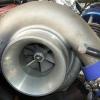Ported Rb26 Head Required
Announcements
-
Similar Content
-
Latest Posts
-
Hi all, Its been a while since I have been on the forum, facebook killed the forum. Sung to the beat of video killed the radio star! Anyway things are still good, the 35 and evo are still going strong, did get a wet skids day in with them. Thinking of a day out at Luddenham Raceway, looks a little small for the 35 but the EVO will enjoy it. I trust everyone is still doing well, and I hope some of the cars in bits are all back together!
-
Plan A in progress.
-
Thanks mate that's very helpful, I'll pull it apart and take a look!
-
Ignore going off the dash, find the right pins on the ECU connector, as it has things you need to power that the dash doesn't. That is unless you had the entire RB25 wiring loom (body, fuse boxes etc too) at which point just find the ignition switch. But I'd go for the ECU specifically if you're mainly on just the engine harness.
-
haha yeah those or the KiwiCNC ones.. but I need to go buy that lotto ticket you mentioned (and win) to afford them. They do seem like a really good thing though - especially with the R35 bearing upgrade.
-









Recommended Posts
Create an account or sign in to comment
You need to be a member in order to leave a comment
Create an account
Sign up for a new account in our community. It's easy!
Register a new accountSign in
Already have an account? Sign in here.
Sign In Now